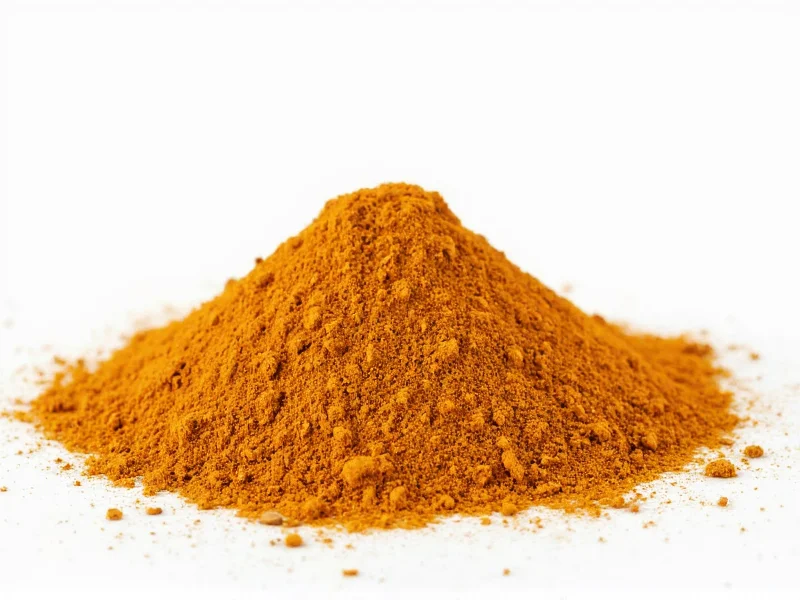The best substitutes for curry powder are garam masala (use 1:1 ratio), a homemade blend of turmeric, cumin, coriander and ginger (1 tsp turmeric + 1/2 tsp each cumin, coriander, ginger), or curry paste diluted with water (1 tbsp paste = 1 tsp powder). Each alternative provides similar earthy, warm flavors but with subtle differences in heat and complexity.
Running out of curry powder mid-recipe doesn't mean your dish is ruined. Many home cooks face this common kitchen dilemma when preparing favorite curry dishes. Understanding what makes curry powder unique helps identify effective replacements using ingredients you likely already have in your pantry.
What Makes Curry Powder Tick
Curry powder isn't a single spice but a carefully balanced blend typically containing turmeric (for color), coriander, cumin, fenugreek, mustard, chili, and sometimes cinnamon or cardamom. This combination creates that distinctive earthy, warm flavor profile essential to many Indian and Southeast Asian dishes. When seeking substitutes, focus on replicating these core flavor components rather than finding an exact match.
Top 5 Practical Curry Powder Replacements
1. Garam Masala (Best Overall Substitute)
Garam masala shares many base ingredients with curry powder but typically contains more warming spices like cinnamon and cardamom while being less turmeric-forward. Use it in a 1:1 ratio for most savory dishes. This works particularly well as a substitute for curry powder in chicken recipes where you want complex warmth without overwhelming yellow color.
2. Homemade Spice Blend (Most Flexible Option)
Create your own blend using common pantry staples:
- 1 teaspoon turmeric
- 1/2 teaspoon ground cumin
- 1/2 teaspoon ground coriander
- 1/4 teaspoon ground ginger
- 1/8 teaspoon black pepper (enhances turmeric absorption)
- Pinch of cayenne (optional for heat)
This versatile mixture works as an easy curry powder substitute with common spices and allows you to adjust flavors to your preference. For a homemade curry powder replacement without turmeric, simply omit it and increase the cumin and coriander by 1/4 teaspoon each, though note your dish won't have the characteristic yellow color.
3. Curry Paste (For Liquid-Based Dishes)
If you have curry paste (red, yellow, or green), use 1 tablespoon of paste to replace 1 teaspoon of curry powder, diluted with a little water or broth. This works best in soups, stews, and sauces where additional liquid won't affect the recipe. Thai curry paste provides a different flavor profile but works well as what to use instead of curry powder if you don't have any dry spices available.
4. Individual Spices (Emergency Solutions)
When time is short and you need how to make curry flavor without curry powder immediately:
- Turmeric + cumin: 3:1 ratio for basic color and earthiness
- Mustard powder + turmeric: Good for British-style curry dishes
- Chinese five-spice: Surprisingly effective in a pinch (use half amount)
5. Ras el Hanout (For North African Flair)
This Moroccan spice blend shares many components with curry powder. Use at a 1:1 ratio for dishes where you don't need the distinctive yellow color. It adds beautiful complexity to lamb and vegetable dishes.
| Substitute | Ratio | Best For | Flavor Notes |
|---|---|---|---|
| Garam Masala | 1:1 | Chicken, vegetable dishes | Warmer, less yellow, more complex |
| Homemade Blend | 1 tsp blend = 1 tsp curry powder | All-purpose use | Closest match to standard curry powder |
| Curry Paste | 1 tbsp paste = 1 tsp powder | Curry sauces, soups | More liquid, different regional flavor |
| Turmeric + Cumin | 3:1 ratio | Emergency substitution | Basic earthiness without full complexity |
| Ras el Hanout | 1:1 | Lamb, hearty vegetable dishes | North African twist, floral notes |
Choosing the Right Substitute for Your Dish
Not all curry powders are created equal, and neither are their substitutes. Consider these factors when selecting your replacement:
- Dish origin: Indian dishes work best with garam masala or homemade blends, while Thai-inspired dishes might benefit from curry paste
- Color requirements: If golden color matters (like in butter chicken), prioritize turmeric-containing substitutes
- Heat tolerance: Adjust cayenne or chili content based on your preference
- Recipe liquid content: Dry spice blends work better in drier dishes, while pastes suit soups and stews
Pro Tips for Successful Substitution
When replacing curry powder in your recipe:
- Bloom spices: Heat dry substitutes in oil for 30 seconds before adding other ingredients to maximize flavor
- Start small: Add 75% of your calculated substitute amount, then taste and adjust
- Balance acidity: A squeeze of lemon juice can help round out substitute flavors
- Consider timing: Add spice substitutes early in cooking for deeper flavor integration
- Document your blend: Note what worked well for future reference
Avoiding Common Substitution Mistakes
Many home cooks make these errors when substituting curry powder:
- Using too much cayenne or chili powder, creating overwhelming heat
- Skipping the black pepper (which enhances turmeric's bioavailability)
- Adding substitutes at the end of cooking, resulting in raw spice flavors
- Using curry sauce instead of paste, which contains additional ingredients that alter recipe balance
- Not adjusting salt content when using pre-salted blends











 浙公网安备
33010002000092号
浙公网安备
33010002000092号 浙B2-20120091-4
浙B2-20120091-4